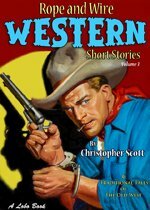Side Trail Story
Eagle Eccentric Erwin A. “Nimrod” Robertson
Steve Levi

Side Trail Story
Eagle, Alaska was one of those communities that could never have been established anywhere else in the world but Alaska. And at no other time in American history than the early days of the Alaska Gold Rush. The founding of the community began on the woodpile in Dawson. In those days the woodpile was for transgressors of the law whose crime was not serious enough to be sent to prison on McNeil Island but too serious to be given a blue ticket and driven out of town. On that woodpile were the Hudson brothers who decided to form a new town just over the border in Alaska. The founders of this speculative enterprise included an ethically challenged Professor Howard, a gambler named Barney Gibbony, another professional gambler by the name of George Graves and his partner “One Thumb Jack,” a Negro laundress by the name of “Black” Becky White, lunch counter entrepreneur Jenny Moore, a medical practitioner of questionable education by the name of "Doc" Pernault and a drifter known as "The Kid," "The Pest" and "Hey You."
The best-known citizen of Eagle was Erwin A. “Nimrod” Robertson. He settled in the area in 1898 after an unsuccessful stint as a jeweler in Maine. A natural tinkerer, it was said he could “make anything but a living.” Some of his inventions included knives of wood which could shave metal and gold puzzle rings.
His reason for coming north to gold fields had been odd. He believed he could invent an airplane, a “bird machine,” and become the first man to fly. All he needed was a $1,000 and he was hopeful that he’d be able to pick that up in the Klondike. He never got the chance to be the first man to fly because the Wright Brothers beat him to it in 1903. This did not stop Robertson from continuing to try to fly. It just took him a bit longer than the Wright brothers. His experience was also somewhat less successful. Two decades after the Wright brothers, Robertson was able to finally build his flying machine; a primitive plane covered with bird feathers. Unlike modern airplanes, however, this one had mobile wings. That is, he invented a machine that would allow the wings to flap like a bird’s. The world will never know if that concept has any validity as the plane burned before it left the ground. The airplane motor Robertson invented, in his words, “to lift, or rise, and propel itself through the air by up and down strokes of its wings as a bird,” can be seen in the Eagle Museum. Also in the Eagle Museum is Robertson’s relief map of the Eagle area. Constructed from newspapers, magazines, hematite and moose blood it measures 60”x 80”.
Robertson entered Alaska lore when, in 1905, he shot a bear that was trying to tear down his food cache. The bear’s body was too heavy to drag away. If he left the cadaver in place it would attract wolves. No one bought bear meat and he had no teeth left because of scurvy. So, to dispose of the bear’s carcass, he made a set of dentures from the bear’s teeth and “ate the bear with its own teeth.” Over the years he perfected the choppers which eventually included teeth from sheep, caribou and bear set in metal from an aluminum pot lid. (The dentures are in the UAF Museum today.) Robertson used them for years and found them serviceable except when he had to drink hot tea. Today the term “eating a bear with its own teeth” means to use a problem to solve itself.
In 1940, at 81 years of age, Robertson was caught ill-prepared for a violent storm. Knowing that he had no chance of surviving and not wanting his body to be devoured by wolves, he chose to lie beneath a trickle of water from a nearby stream. Thus he froze himself solid to an ice floe. After his corpse was found, it took rescue workers almost a week to extract his body from the river ice.
